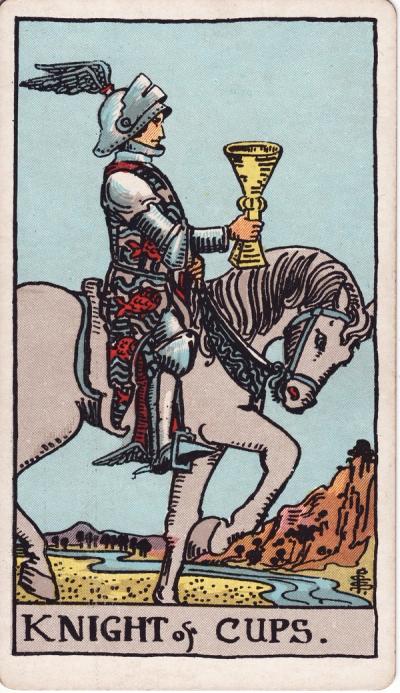
Introduction to Tarot Reading
What Are Tarot Cards?
Tarot cards are more than just mystical tools—they're visual symbols that help individuals reflect on life's circumstances. A standard tarot deck includes 78 cards divided into the Major Arcana and Minor Arcana, each offering distinct insights.
Origins and History of Tarot Reading
Tarot's roots trace back to the 15th century in Europe, originally used for playing games. Over time, it evolved into a tool for spiritual guidance and self-discovery, gaining widespread popularity among mystics and seekers alike. Why People Use Tarot Cards
People turn to tarot to find clarity, spark introspection, and explore the unknown. Whether it's for personal growth, relationship insight, or decision-making, tarot serves as a mirror to one’s subconscious.
Getting Started with Tarot
Choosing Your First Tarot Deck
When learning how to read tarot cards, selecting the right deck is crucial. The Rider-Waite-Smith deck is ideal for beginners due to its rich symbolism and wide availability.
Rider-Waite vs. Other Decks
Rider-Waite: Clear imagery, abundant resources.
Thoth Tarot: More esoteric, suited for advanced readers.
Modern Decks: Artistic variations offering unique themes.
Creating a Sacred Space for Reading
A calm, dedicated space enhances your focus. Light a candle, burn some incense, or simply clear your table to create a sacred environment for your readings.
Understanding the Structure of a Tarot Deck
Major Arcana (22 cards): Life's big themes and spiritual lessons.
Minor Arcana (56 cards): Everyday events and situations, divided into four suits—Cups, Pentacles, Swords, and Wands.
The 3-Card Spread Explained
What Is the Past-Present-Future Spread?
This spread uses three cards to examine how your past influences your present and future. It's one of the simplest yet most insightful spreads for both novices and pros.
Why It’s Ideal for Beginners
Easy to learn
Offers a balanced view
Encourages storytelling and intuition
How to Shuffle and Draw the Cards
Shuffle the deck with a question or situation in mind.
Cut the deck and lay out three cards from left to right.
Label them as:
Card 1: Past
Card 2: Present
Card 3: Future
Reading the Past Card
What the Past Position Represents
This card highlights experiences, decisions, or patterns from your past that are still influencing you today.
Sample Past Card Interpretations
The Lovers: A pivotal relationship shaped your beliefs.
Five of Pentacles: A period of financial struggle.
The Tower: A sudden event that changed everything.
Reading the Present Card
Understanding Current Circumstances
This card represents your current mindset, challenges, and energies.
Common Present Card Meanings
The Chariot: You're in control and moving forward.
Two of Swords: You're avoiding a decision.
Nine of Cups: A moment of emotional satisfaction.
Reading the Future Card
What the Future Position Symbolizes
This card offers a glimpse into potential outcomes based on your current path.
Making Sense of Future Predictions
The Sun: Joy and success are on the horizon.
Three of Wands: Expansion and planning.
Ten of Swords: Prepare for an ending, followed by renewal.
Putting It All Together
Interpreting the Narrative of the Spread
The key to mastering how to read tarot cards is connecting the three cards into a flowing story. For example:
Past (The Devil) → Present (The Hermit) → Future (The Star) This might suggest overcoming past addictions, current introspection, and future hope.
Intuition vs. Book Meanings
While guidebooks help, your personal intuition brings deeper insight. Let the imagery speak to you—every reading is a personal conversation with the cards.
Practice Exercise: Sample Reading
Try this:
Ask: "What should I focus on this month?"
Draw three cards and interpret them using this article as your guide.
Tips for Accurate Tarot Readings
Trusting Your Intuition
The more you practice, the better you get at tuning into your instincts. Let your feelings guide your interpretations.
Keeping a Tarot Journal
Record your readings, thoughts, and results. Patterns will emerge, helping you sharpen your skills.
Avoiding Common Mistakes
Don’t read when emotionally overwhelmed.
Avoid over-reliance on “bad” or “good” cards.
Refrain from reading the same question repeatedly.
FAQs on How to Read Tarot Cards
Can anyone read tarot cards?
Yes! With practice and dedication, anyone can learn.
Do you need to be psychic?
No. Tarot reading is more about intuition, reflection, and symbolism.
How often should I read for myself?
Once a day or week is ideal—enough for insight, not obsession.
What if I get a bad card?
No card is inherently bad. Each one holds valuable lessons or warnings.
Can tarot really predict the future?
Tarot reveals possibilities, not certainties. It’s a guide, not a verdict.
How long does it take to get good at tarot?
You can start understanding basics within weeks. Mastery takes consistent practice over months or years.
Conclusion: Begin Your Tarot Journey Today
Learning how to read tarot cards using the past-present-future spread is a powerful way to connect with your inner self. With practice, intuition, and reflection, you'll transform these cards into a trusted compass for life’s journey.